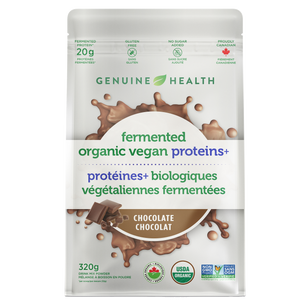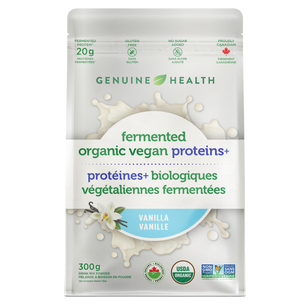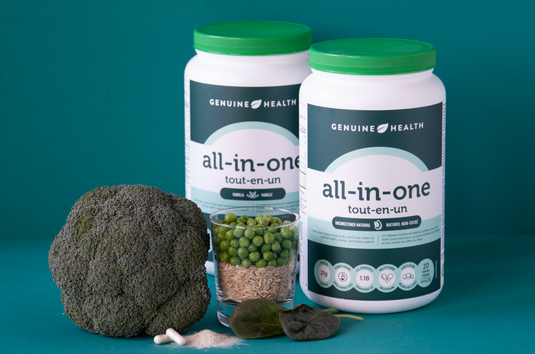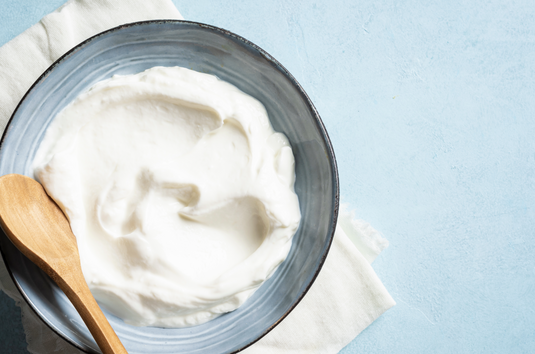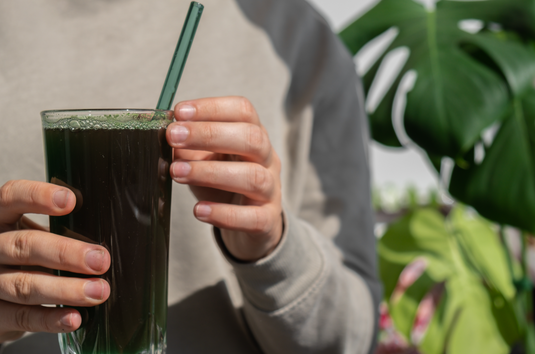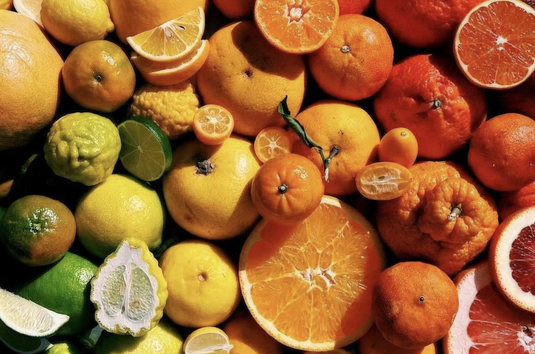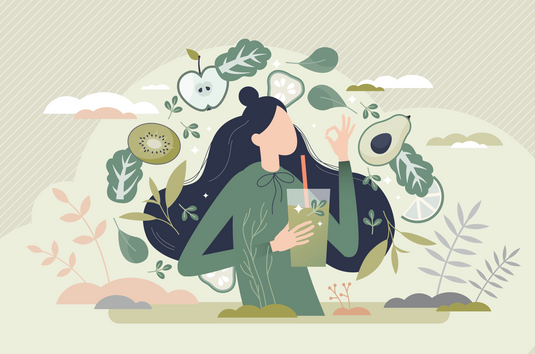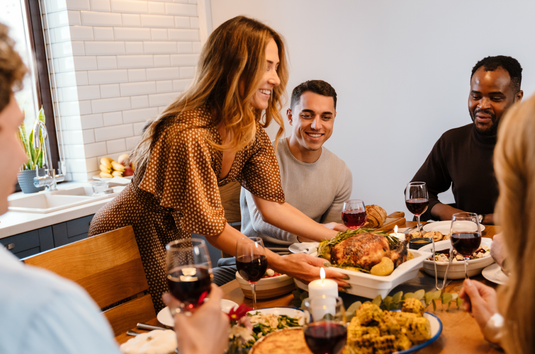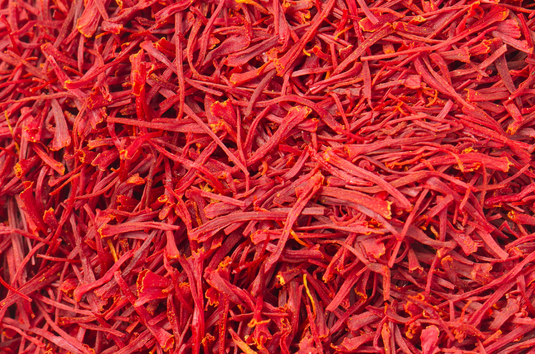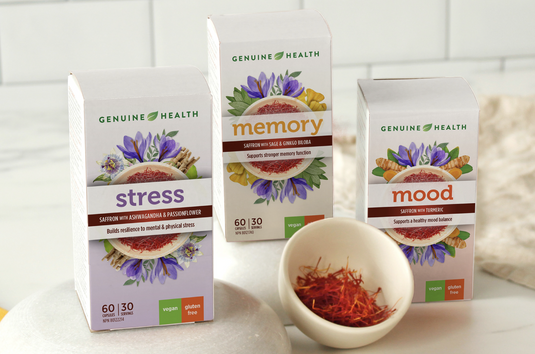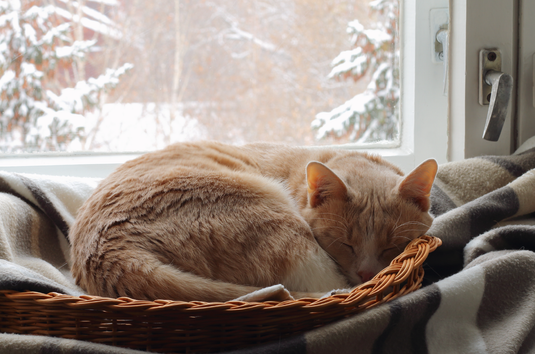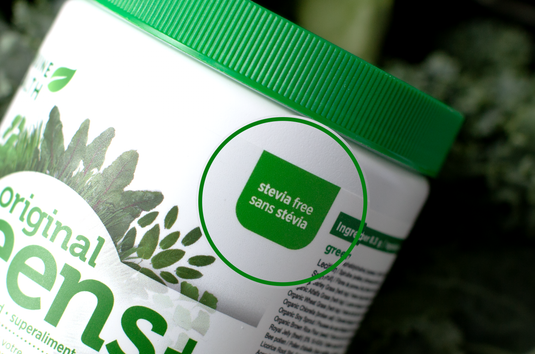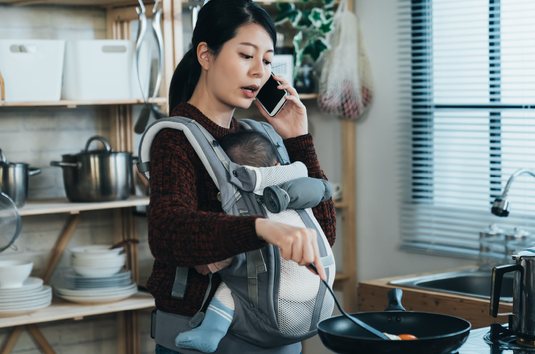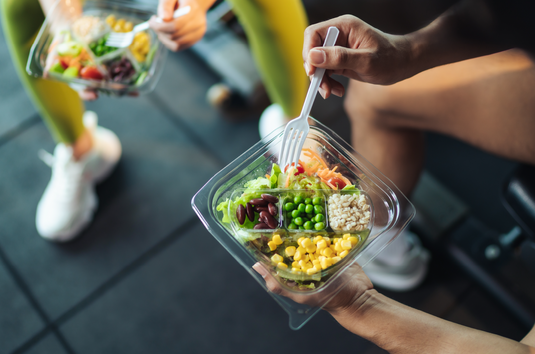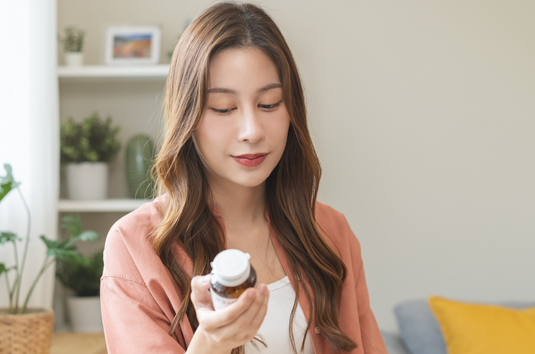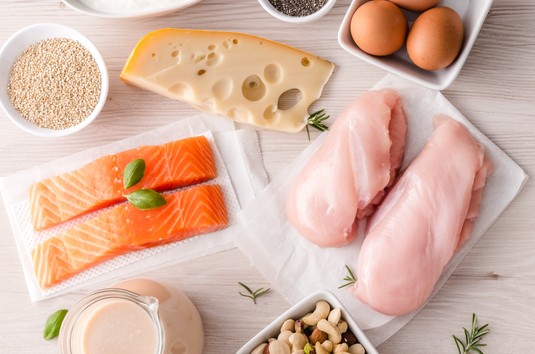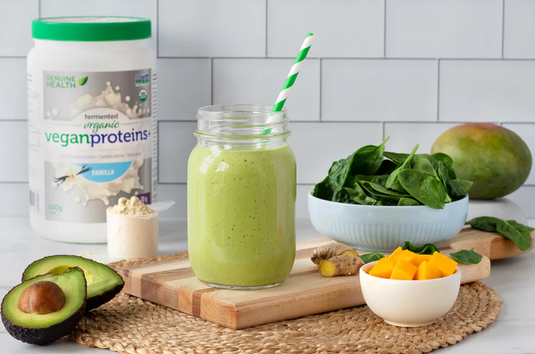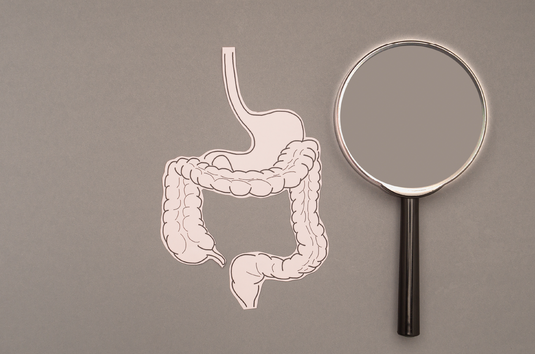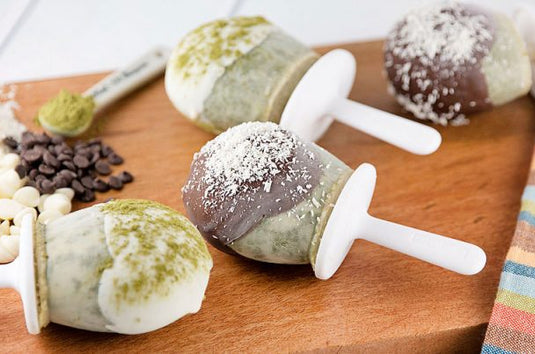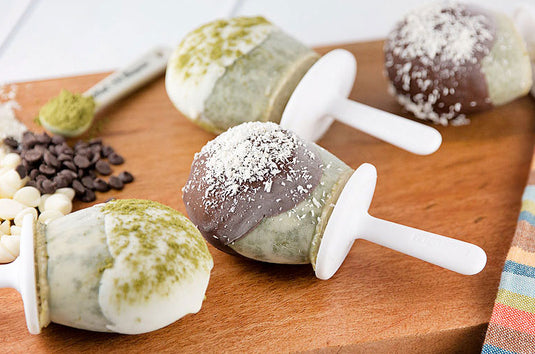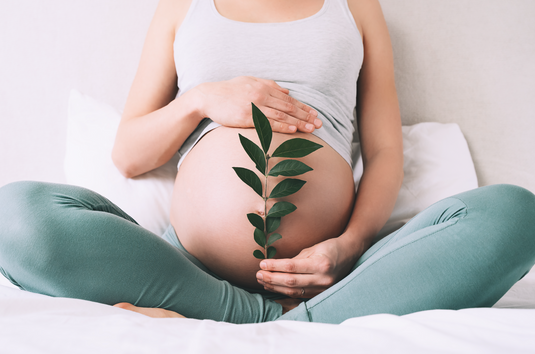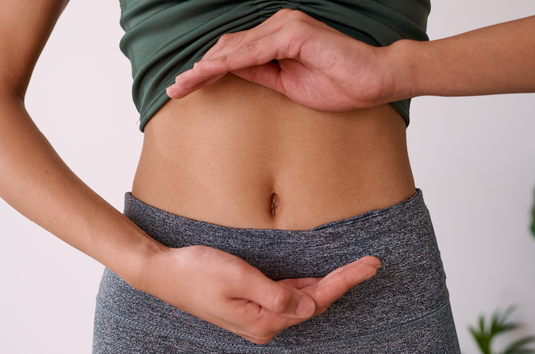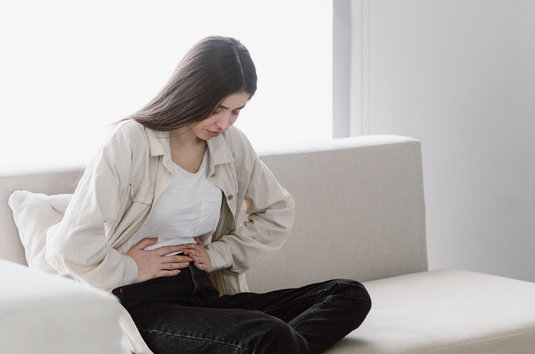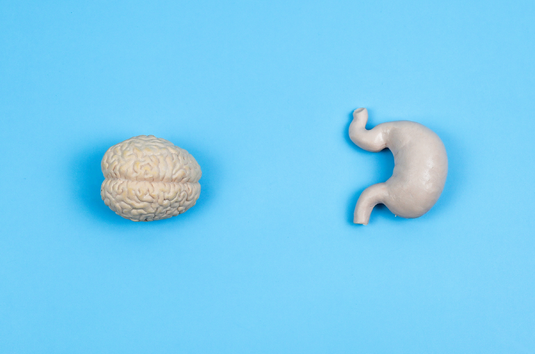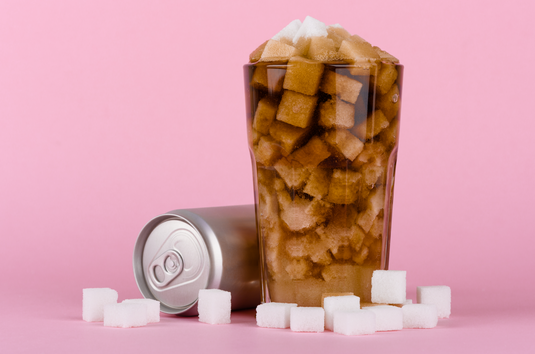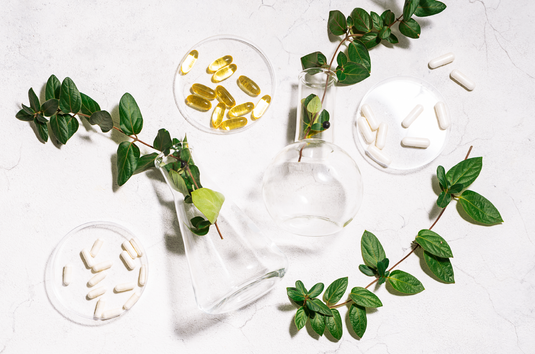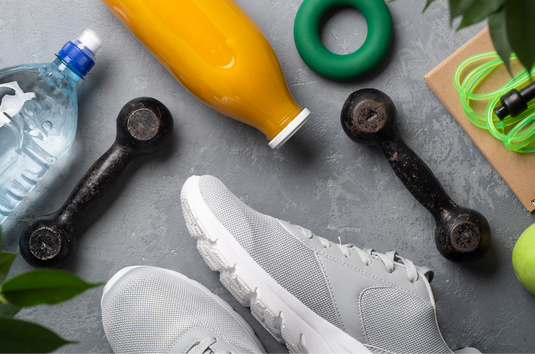7 Ways to Eat Less Sugar
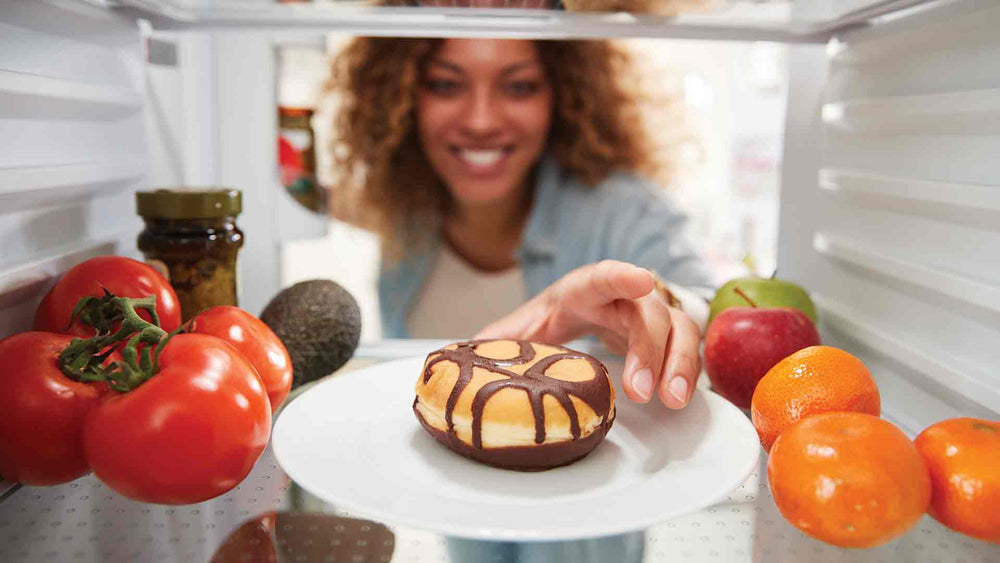
If you’re someone that gets sugar cravings, you might just think you have less willpower than someone who doesn’t. I’m here to tell you it simply isn’t a case of willpower. In fact, there are proven reasons you crave sugar (stress, hormonal imbalances, lack of sleep) and so much you can do to kick the sweet stuff.
If you are trying to eat less sugar, whether it’s because you have cravings, symptoms of blood sugar imbalance like belly fat or even diabetes, or you simply think you eat too much of it, this guide will help you get rid of your sweet habit.
One of the most important things you can do to eat less sugar is to maintain relatively steady blood sugar levels. When blood sugar levels get low, either from waiting far too long between meals, or from the crash that follows a meal high in refined carbohydrates, it triggers hunger—especially carbohydrate cravings.
In order to balance your blood sugar levels, choose more low-glycemic carbohydrates like vegetables and legumes in place of refined white sugar, breads and pastas. The fibre in these foods helps to slow the release of sugars they contain, helping to avoid a crash that will inevitably lead to strong cravings. Having protein, especially at breakfast, can also set your blood sugar on the right track for the day and reduce cravings later in the day. I like to add a scoop of Genuine Health fermented organic vegan proteins+ for extra protein. Lastly, try to avoid going long periods of the day without eating, followed by a heavy lunch or dinner, as this can also raise your blood sugar higher and is often harder on your digestion. Here are some great snack ideas, including Genuine Health’s fermented vegan proteins+ bars. They have an excellent balance of protein, healthy fats and fibre so you can sustain energy and manage cravings.
Rather than going cold turkey with sugar, start by replacing refined sugars and sugars that spike your blood sugar levels, like corn syrup, with natural sugars in moderation. A few dates, or whole fruits like apples, pears, or berries for example, are sweet, but come with fiber and nutrients so your taste buds can adjust without sending your blood sugar on a whirlwind.
The more tastes and textures a meal has, the more satisfying it is to your brain and the less likely you are to want to mindlessly eat more or need dessert, even following a big meal. A general rule of thumb is that each recipe should have a combination of sweet, salty and bitter. If you’re thinking about a salad, this could be a pinch of tamari (or sea salt) in the dressing, some fresh berries on top of bitter arugula or mustard greens. By also adding more texture, it also makes for a more satiating meal. Another example would be adding some nuts or seeds on top of a smoothie for crunch.
Research on the relationship between sleep and blood sugar has found that loss of sleep can lead to imbalances in blood sugar levels, which can lead to more cravings, hunger and lower energy. Loss of sleep also increases appetite and hunger by elevating a hunger hormone called ghrelin and lowering leptin levels (an appetite suppressing hormone).
If you struggle with falling asleep, the best advice I can give is to develop a wind-down routine. About an hour before you would like to be asleep, turn off blue light on your phone, laptop or television, which suppresses melatonin production and impacts sleep. If you have a busy mind, write out your to-do list for the next day then set it aside. Incorporate relaxing habits like having a shower or a bath before bed, reading a book or even journaling.
This is a well-known tip but it’s worth repeating. Added sugar is everywhere and if you are trying to avoid it for any reason, you really do need to familiarize yourself with how to read labels so you can at least decide how much sugar you’re consuming and the source. Some examples of other names for sugar include: beet sugar, high fructose corn syrup, raw sugar or brown sugar, barley malt syrup, fancy molasses, anything ending in "ose" (fructose, lactose, glucose-fructose, dextrose), fruit juice and fruit purée concentrates. Some places you might not suspect added sugar are salsas, tomato sauces, non-dairy milks, soup broths and stocks.
Let me first state that rather than constantly trying to suppress your cravings, try to get an understanding of where they’re coming from. Are you sleeping enough, are you eating enough in general or drastically cutting carbs, what’s your stress like, etc.? Now with that being said, over the years working as a Nutritionist and running the HEAL Sugar Detox, there are a few little tricks I’ve picked up for when a really strong sugar craving comes on but you aren’t actually hungry.
Here are a few of them:
It can be really difficult to avoid sugary foods or hidden sugars if you don’t have your own healthy meals and snacks prepared or at least planned ahead of time. In the Meal Planning Program we run at HEAL, we provide healthier alternatives to traditional baked treats and simple meals and snacks you can have during the week. It’s also a good idea to stock up on your favourite bars (like Genuine Health’s fermented vegan proteins+ bars) for when you need something in a pinch. Making your own food also gives you full control of how much sugar you’re actually eating.
Sources:
Davis, et al. Cinnamon intake lowers fasting blood glucose: meta-analysis. J Med Food. 2011;14(9):884-9.
Knutson, KL. Impact of sleep and sleep loss on glucose homeostasis and appetite regulation. Sleep Med Clin. 2007;2(2):187-197.
Leidy, et al. Beneficial effects of a higher-protein breakfast on the appetitive, hormonal, and neural signals controlling energy intake regulation in overweight/obese, "breakfast-skipping," late-adolescent girls. Am J Clin Nutr. 2013;97(4):677-88.
Rolls, ET. Taste, olfactory, and food texture processing in the brain, and the control of food intake. Physiol Behav. 2005;;85(1):45-56.
Young-Min, et al. A High-Protein Breakfast Induces Greater Insulin and Glucose-Dependent Insulinotropic Peptide Responses to a Subsequent Lunch Meal in Individuals with Type 2 Diabetes. The Journal of Nutrition. 2015;145(3):452–458.
https://ed.ted.com/lessons/how-sugar-affects-the-brain-nicole-avena
If you are trying to eat less sugar, whether it’s because you have cravings, symptoms of blood sugar imbalance like belly fat or even diabetes, or you simply think you eat too much of it, this guide will help you get rid of your sweet habit.
-
Balance Your Blood Sugar Levels
One of the most important things you can do to eat less sugar is to maintain relatively steady blood sugar levels. When blood sugar levels get low, either from waiting far too long between meals, or from the crash that follows a meal high in refined carbohydrates, it triggers hunger—especially carbohydrate cravings.
In order to balance your blood sugar levels, choose more low-glycemic carbohydrates like vegetables and legumes in place of refined white sugar, breads and pastas. The fibre in these foods helps to slow the release of sugars they contain, helping to avoid a crash that will inevitably lead to strong cravings. Having protein, especially at breakfast, can also set your blood sugar on the right track for the day and reduce cravings later in the day. I like to add a scoop of Genuine Health fermented organic vegan proteins+ for extra protein. Lastly, try to avoid going long periods of the day without eating, followed by a heavy lunch or dinner, as this can also raise your blood sugar higher and is often harder on your digestion. Here are some great snack ideas, including Genuine Health’s fermented vegan proteins+ bars. They have an excellent balance of protein, healthy fats and fibre so you can sustain energy and manage cravings.
-
Swap for Natural Sweeteners
Rather than going cold turkey with sugar, start by replacing refined sugars and sugars that spike your blood sugar levels, like corn syrup, with natural sugars in moderation. A few dates, or whole fruits like apples, pears, or berries for example, are sweet, but come with fiber and nutrients so your taste buds can adjust without sending your blood sugar on a whirlwind.
-
Eat a Variety of Tastes and Textures
The more tastes and textures a meal has, the more satisfying it is to your brain and the less likely you are to want to mindlessly eat more or need dessert, even following a big meal. A general rule of thumb is that each recipe should have a combination of sweet, salty and bitter. If you’re thinking about a salad, this could be a pinch of tamari (or sea salt) in the dressing, some fresh berries on top of bitter arugula or mustard greens. By also adding more texture, it also makes for a more satiating meal. Another example would be adding some nuts or seeds on top of a smoothie for crunch.
-
Sleep
Research on the relationship between sleep and blood sugar has found that loss of sleep can lead to imbalances in blood sugar levels, which can lead to more cravings, hunger and lower energy. Loss of sleep also increases appetite and hunger by elevating a hunger hormone called ghrelin and lowering leptin levels (an appetite suppressing hormone).
If you struggle with falling asleep, the best advice I can give is to develop a wind-down routine. About an hour before you would like to be asleep, turn off blue light on your phone, laptop or television, which suppresses melatonin production and impacts sleep. If you have a busy mind, write out your to-do list for the next day then set it aside. Incorporate relaxing habits like having a shower or a bath before bed, reading a book or even journaling.
-
Read Labels
This is a well-known tip but it’s worth repeating. Added sugar is everywhere and if you are trying to avoid it for any reason, you really do need to familiarize yourself with how to read labels so you can at least decide how much sugar you’re consuming and the source. Some examples of other names for sugar include: beet sugar, high fructose corn syrup, raw sugar or brown sugar, barley malt syrup, fancy molasses, anything ending in "ose" (fructose, lactose, glucose-fructose, dextrose), fruit juice and fruit purée concentrates. Some places you might not suspect added sugar are salsas, tomato sauces, non-dairy milks, soup broths and stocks.
-
Have A Few “Go-to’s” for When A Craving Hits but You Aren’t Actually Hungry
Let me first state that rather than constantly trying to suppress your cravings, try to get an understanding of where they’re coming from. Are you sleeping enough, are you eating enough in general or drastically cutting carbs, what’s your stress like, etc.? Now with that being said, over the years working as a Nutritionist and running the HEAL Sugar Detox, there are a few little tricks I’ve picked up for when a really strong sugar craving comes on but you aren’t actually hungry.
Here are a few of them:
- Have a fruity herbal tea
- Add cinnamon to dishes to amplify the sweetness and balance your blood sugar levels
- Eat a tablespoon of almond or natural peanut butter
- Drink some kombucha
- Brush your teeth
-
Prepare Your Meals for the Day
It can be really difficult to avoid sugary foods or hidden sugars if you don’t have your own healthy meals and snacks prepared or at least planned ahead of time. In the Meal Planning Program we run at HEAL, we provide healthier alternatives to traditional baked treats and simple meals and snacks you can have during the week. It’s also a good idea to stock up on your favourite bars (like Genuine Health’s fermented vegan proteins+ bars) for when you need something in a pinch. Making your own food also gives you full control of how much sugar you’re actually eating.
Sources:
Davis, et al. Cinnamon intake lowers fasting blood glucose: meta-analysis. J Med Food. 2011;14(9):884-9.
Knutson, KL. Impact of sleep and sleep loss on glucose homeostasis and appetite regulation. Sleep Med Clin. 2007;2(2):187-197.
Leidy, et al. Beneficial effects of a higher-protein breakfast on the appetitive, hormonal, and neural signals controlling energy intake regulation in overweight/obese, "breakfast-skipping," late-adolescent girls. Am J Clin Nutr. 2013;97(4):677-88.
Rolls, ET. Taste, olfactory, and food texture processing in the brain, and the control of food intake. Physiol Behav. 2005;;85(1):45-56.
Young-Min, et al. A High-Protein Breakfast Induces Greater Insulin and Glucose-Dependent Insulinotropic Peptide Responses to a Subsequent Lunch Meal in Individuals with Type 2 Diabetes. The Journal of Nutrition. 2015;145(3):452–458.
https://ed.ted.com/lessons/how-sugar-affects-the-brain-nicole-avena
